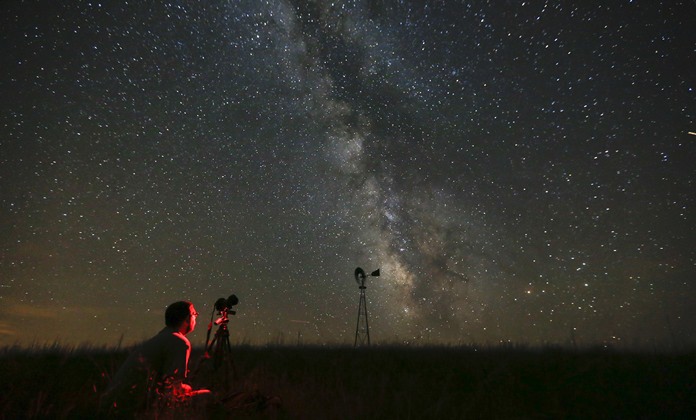Cape Canaveral, Fla. (AP) – More than one-third of the world’s population can no longer see the Milky Way because of man-made lights.
Among those missing out on awe-inspiring Milky Way views: nearly 80 percent of North Americans and 60 percent of Europeans.

These are the findings of a new global atlas of light pollution, published as part of a scientific paper Friday, June 10.
More than four-fifths of Earthlings now live beneath skies polluted by artificial light, which blocks out the Milky Way for more than a third of them, according to the research.
“I hope that this atlas will finally open the eyes of people to light pollution,” lead author Fabio Falchi said in a statement. He is with the Light Pollution Science and Technology Institute in northern Italy.
Tiny Singapore is the most light-polluted country; the entire population loses out on seeing the true night sky. Kuwait and Qatar are close runners-up. On the opposite end of the spectrum – countries whose populations are exposed to the least light pollution – are Chad, Central African Republic and Madagascar.
Falchi and his team members warn the problem affects more than astronomers. It’s profoundly altered a fundamental human experience, namely that of pondering the night sky.
Co-author Christopher Elvidge, a scientist with the National Oceanic and Atmospheric Administration’s National Centers for Environmental Information in Boulder, Colorado, bemoans the fact that “whole generations” of Americans have never seen the Milky Way.
“It’s a big part of our connection to the cosmos – and it’s been lost,” he said in a statement.
The situation is even worse for some animals. Artificial light can confuse insects, birds and sea turtles, with deadly results. There’s also the waste of energy and money, the researchers point out.
The National Park Service’s Dan Duriscoe, a co-author, noted that some national parks in the West like Yellowstone are among the last refuges of darkness in the U.S. Urban light a few hundred miles away or more can spoil nighttime vistas, even in pristine federal land like Death Valley National Park in Southern California.
The report – which appears in the journal Science Advances – is based on new satellite data and special software.
Online:
Science Advances: http://advances.sciencemag.org/




